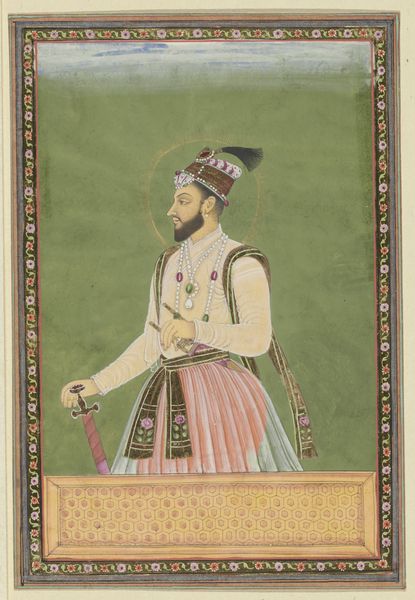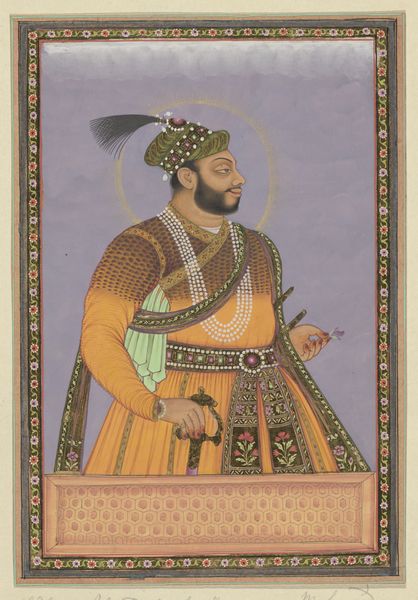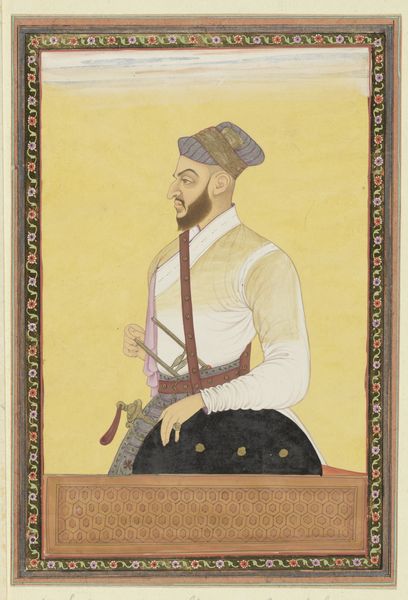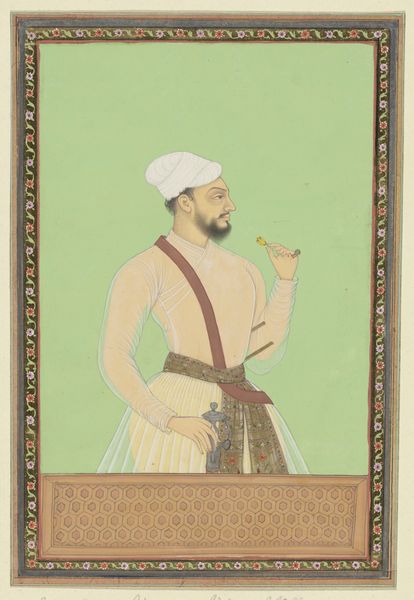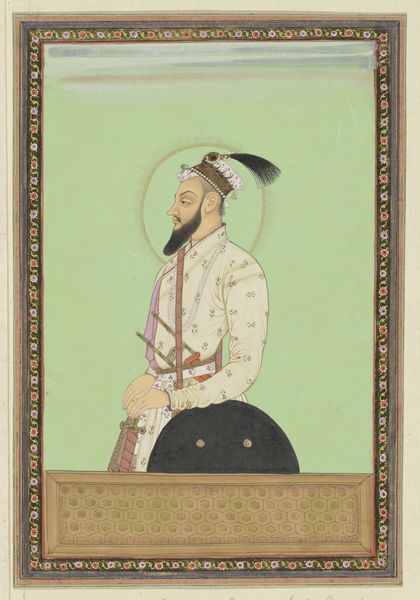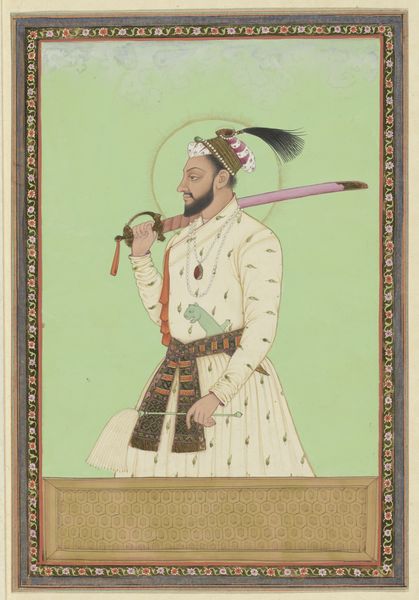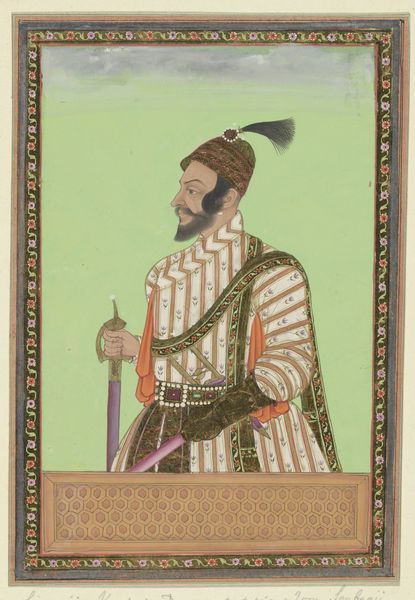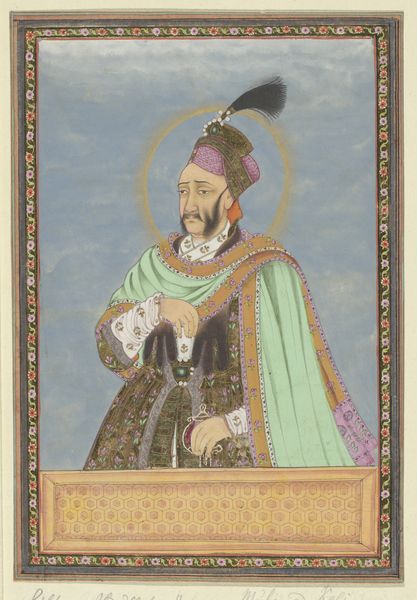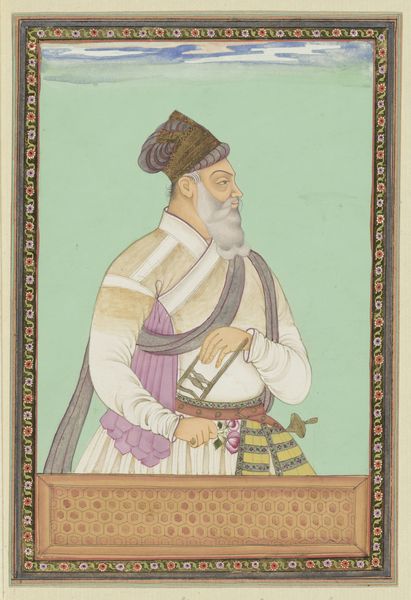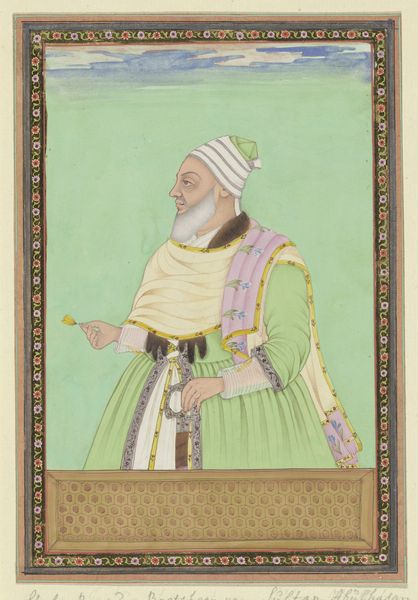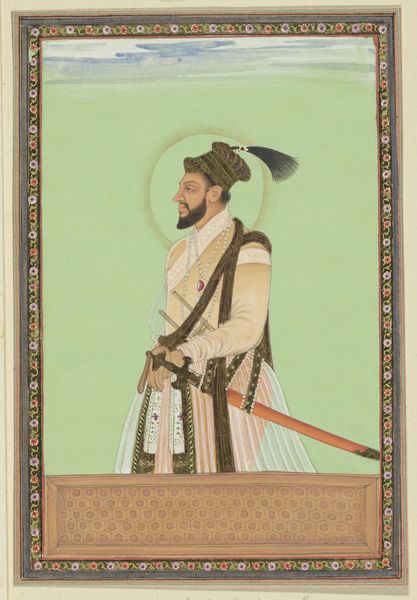
Portret van Muhammad Ibrahim; eerst heeft hij gediend als legeraanvoerder van Karnatak; vervolgens is hij commandant van de cavalerie geworden en thans voert hij als legeraanvoerder oorlog met Aurangzeb c. 1686
0:00
0:00
anonymous
Rijksmuseum
painting, watercolor, mural
#
portrait
#
water colours
#
painting
#
asian-art
#
watercolor
#
islamic-art
#
mural
#
miniature
#
watercolor
Dimensions: height 203 mm, width 140 mm
Copyright: Rijks Museum: Open Domain
Curator: Welcome. Before us hangs an Indian painting of considerable historical weight. It's believed to have been created around 1686. This piece, housed at the Rijksmuseum, is titled "Portret van Muhammad Ibrahim; eerst heeft hij gediend als legeraanvoerder van Karnatak; vervolgens is hij commandant van de cavalerie geworden en thans voert hij als legeraanvoerder oorlog met Aurangzeb"…quite a mouthful. In English, "Portrait of Muhammad Ibrahim; first he served as army commander of Karnataka; then he became commander of the cavalry and is now waging war as army commander with Aurangzeb". Editor: What strikes me immediately is its stillness, the way the figure almost floats against that serene green background. The muted palette lends a quiet dignity, but I’m equally captivated by the intricate patterns adorning his garments and that incredible floral border. Curator: Indeed, the floral motifs contrast beautifully with the backdrop. The work documents not just Ibrahim, but a period of intense conflict and political maneuvering within the Mughal Empire. It speaks volumes about identity and power struggles. Consider the very act of commissioning such a portrait—a statement of defiance against Aurangzeb. Editor: Defiance, certainly, yet there's an almost melancholic aura about him. The flower he delicately holds – a symbol perhaps? Or merely an element of the composition used to draw the eye and create balance? It counters the somewhat weighty attire. The formal elements, the precise lines of the face and clothing, and soft wash of the color, underscore the portrait's quiet emotional power. Curator: Symbolism would have been crucial for communicating complex ideas within the cultural and political context of the time. We can examine the subject’s attire; the details of the turban or the shawl – everything indicates rank and affiliation. Also, the fact that the work remains unsigned says much about the status of the artist, as craftsperson more so than individual. Editor: Yes, while acknowledging the wider socio-political conditions, the visual harmony is equally crucial here. The layering of colours and textures create a fascinating surface dynamic, contributing significantly to our reading of the work. Curator: By exploring the intertwined strands of politics, biography, and artistry, we uncover much broader truths. The subject of identity then becomes universally resonant, allowing contemporary audiences to see Ibrahim’s personal struggle with contemporary power dynamics. Editor: And for me, I depart from its presence with an enriched awareness of form and artistic execution, allowing an intimate, aesthetic understanding.
Comments
No comments
Be the first to comment and join the conversation on the ultimate creative platform.
